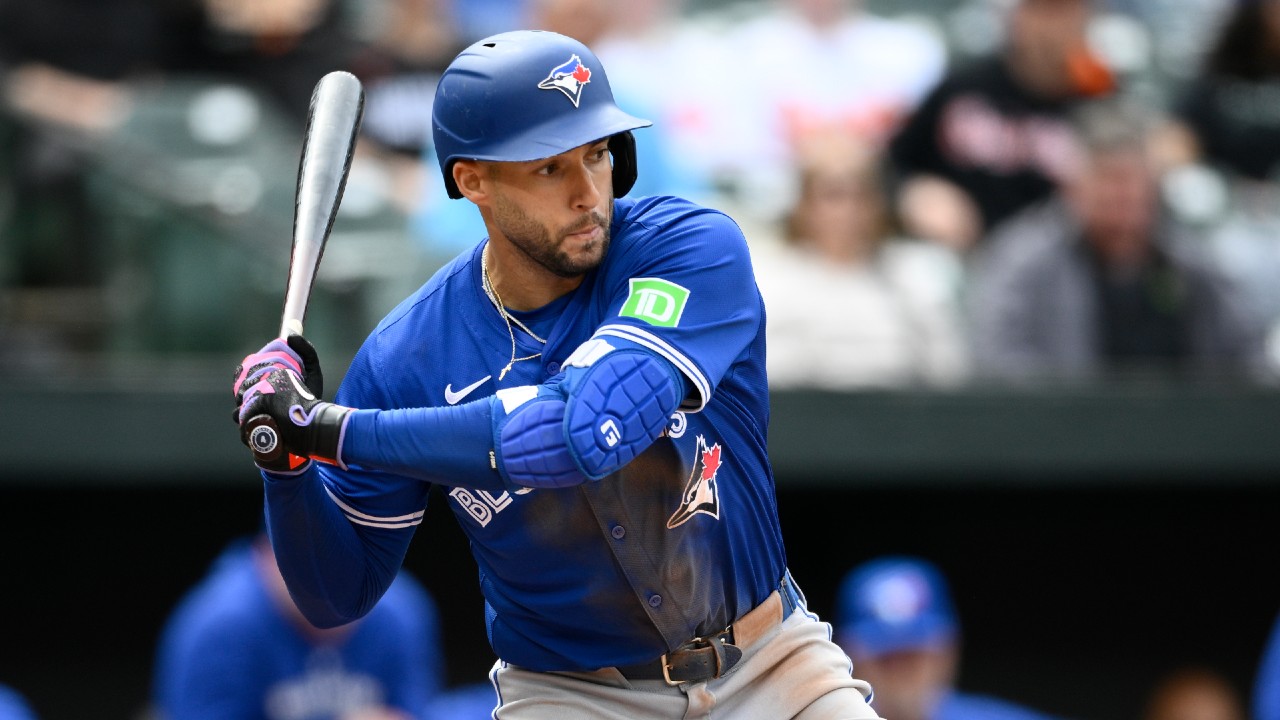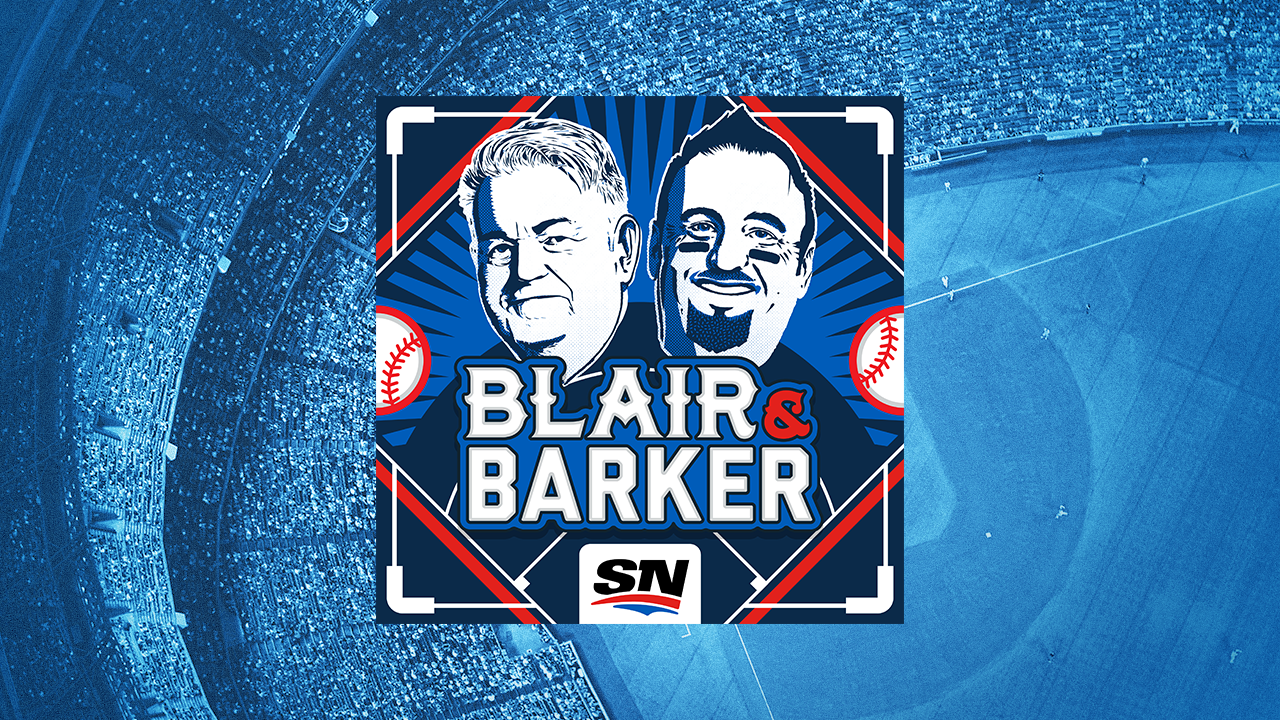The Toronto Blue Jays did not begin their 2024 season hoping to engage in a full-scale youth movement, but that’s where they find themselves now.
Following the trade deadline the club has just four position players who demand regular at-bats — George Springer, Daulton Varsho, Alejandro Kirk and Vladimir Guerrero Jr. — with more than half of the team’s at-bats available to players trying to establish themselves at the MLB level.
On the pitching side Yusei Kikuchi’s departure has left a hole in the rotation and the bullpen is full of arms fighting for their big-league spots outside of Chad Green, Génesis Cabrera and possibly Erik Swanson.
Because the most important aspect of the Blue Jays’ final 53 games will be tracking the progress of the team’s young players, we thought it would be helpful to single out something to keep a close eye on for each down the stretch.
For the purposes of this exercise, we’ve omitted Ernie Clement due to age (28) and the pair of Luis De Los Santos and Steward Berroa due to their status as organization depth rather than players with prospect pedigree. It’s possible they will surprise, but the Blue Jays aren’t counting on it.
We’re also tossing the relievers because none of them would be described as prospects or players the Blue Jays are counting on beyond 2024. That still leaves us with nearly one-third of the team’s roster.
The incumbents
Spencer Horwitz
What to watch: Second-base defence
Horwitz has only made 222 trips to the plate at the MLB level, but based on his early results — and triple-A numbers — it seems relatively clear that he can hit major-league pitching.
His .275/.365/.412 line is impressive and according to Statcast he might even be experiencing bad luck considering his xBA sits at .279 and his xSLG is .457.
FanGraphs’ projection systems see him producing a wRC+ between 108 and 118 from here on out and even the low end of that is impressive for a rookie.
What matters most for Horwitz’s development is whether he looks like a credible everyday second baseman. At first base his offence profile might be workable even without plus power, but at the keystone it could really sing.
Horwitz’s 122 wRC+ currently ranks fifth in the majors among second basemen with 150-plus plate appearances. If he can stay at the position long term he projects to be a real building block for the Blue Jays.
Davis Schneider
What to watch: Power production
Schneider has faded from the spotlight in recent months due to the success of Horwitz, his own struggles, and the influx of new faces.
At the same time, he’s younger than some of the other players on this list (25) and he owns a sturdy .234/.339/.446 line in his first 476 plate appearances as a big leaguer.
He found more success last year than he has in 2024, but all of FanGraphs’ projection systems still see him as an above-average hitter with wRC+ estimates in the 109 to 123 range.
Schneider has plenty of swing-and-miss in his game, even with a 7.7 percent jump in his MLB contact rate from 2023 to 2024. That means he needs walks and extra-base hits to stay productive — and the bases on balls will be hard to come by if he doesn’t scare pitchers with his thump.
Schneider has just seven extra-base hits in 154 plate appearances since the beginning of June, good for a .095 ISO. To really thrive at the highest level Schneider probably needs to be closer to .200 by that metric.
Addison Barger
What to watch: BB/K ratio
Barger has come on lately, putting his impressive bat speed — and resulting power — on display with two home runs in his last three games.
As encouraging as that is, it will be difficult for the 24-year-old to find any kind of big-league success with more than seven strikeouts for every walk. Of the 433 MLB hitters with 70-plus plate appearances this season, only 16 have a worse BB/K than Barger (0.14).
The rookie was always expected to strike out plenty at this level, but he carried a walk rate of 13.1 per cent or better in each of his stints at triple-A and needs to balance out his whiffs with some free passes.
While his power potential is solid, it will need to be supported by better discipline.
Leo Jiménez
What to watch: Strikeout rate
Jiménez may be a glove-first player, but he needs to hit a bit to hold his own at this level, and that won’t happen if he can’t keep the strikeouts at bay.
Even in the minor leagues he demonstrated modest power, and his offensive profile isn’t going to work unless he consistently puts the ball in play. Jiménez never ran a strikeout rate above 20 per cent at any minor-league level he saw for more than two games, so there’s reason to believe he can improve on the 27.7 per cent mark he holds right now.
His projections have that number living between 20.0 and 21.4 per cent from here on out. In order to be a league-average hitter he’d probably have to be even better than the low end of that range, but that may not be a fair expectation for the 23-year-old.
Theoretically, he just needs to be respectable at the plate to have value at the major league level.
Yariel Rodríguez
What to watch: Chase rate
Rodríguez isn’t a 27-year-old seasoned pro, but he’s effectively a prospect as a starting pitcher.
The right-hander has exceeded expectations overall, but his walk rate (5.31 BB/9) is ugly. That number doesn’t come from an inability to find the plate as his zone rate (48.4 per cent) is almost precisely MLB average (48.6 per cent).
Instead, Rodríguez has struggled to get MLB hitters to swing at pitches he throws outside the zone as his chase rate is in the eighth percentile.
His biggest struggle has been getting opponents to go after his curveball, changeup and sinker. Hitters have swung at those pitches just 23.3 per cent of the time when they’re outside the zone, which they have been 63.2 per cent of the time.
Since Rodríguez arrived it’s been clear that his fastball and slider were well ahead of his other pitches developmentally and it will be intriguing to watch how successful his lesser offerings are down the stretch.
The new guys
Joey Loperfido
What to watch: Success vs. breaking balls
The ability or inability to hit curveballs has become such a cliche in baseball circles that they made a mediocre Clint Eastwood movie about it in 2012.
While hitting that one pitch won’t necessarily decide Loperfido’s fate it’s undeniable that handling breaking balls has been a significant issue for him in 2024.
Loperfido pummeled triple-A pitching to the tune of a .933 OPS earlier in the year, but much of the damage came against fastballs. He hit .188 and slugged .417 against breaking balls with worse expected numbers (.142 xBA and .318 xSLG) plus a meaty whiff rate (36.7 per cent).
In his first taste of MLB action the 25-year-old has produced just two hits with a ghastly whiff rate of 59.3 per cent.
That is sure to improve, but how much it does could say a lot about where Loperfido goes from here.
Jake Bloss
What to watch: Strikeout rate
Bloss may not appear in a Blue Jays uniform in 2024, but he reached the majors with the Houston Astros and could easily get some starts down the stretch.
Although the right-hander is arguably the highest-profile prospect Toronto acquired at the deadline that doesn’t mean he’s without blemishes. This season the biggest one has been the lack of K’s.
Bloss dominated out of the gate at single-A, but at levels double-A and above he posted a relatively modest 7.31 K/9. Numbers like that can be workable for extreme sinkerballers, but they are hard to pull off for more conventional starters.
With middle-of-the-pack velocity and no dominant breaking pitch Bloss isn’t expected to mow opponents down. Any MLB success he has with the Blue Jays is likely to come primarily from his command and repertoire depth, but a few more strikeouts (either in the majors or at triple-A) would add some shine to an already-strong 2024 campaign for Bloss.
Jonatan Clase
What to watch: Power production
Clase is no sure thing to see MLB action, but like Bloss he was in the majors earlier in the year and deserves a mention.
The outfielder’s carrying tool is his elite speed, but it’s tough to make a meaningful MLB impact with wheels alone and in order to thrive at the dish Clase will need to display some real power.
Producing extra-base hits is such a point of emphasis for the 22-year-old because his ability to make contact is in serious doubt at this point in his development.
Despite his solid overall numbers at triple-A, he struck out 25.7 per cent of the time at that level with the Tacoma Rainiers in 2024 and ran a K rate of 32.6 per cent with the Mariners in a small sample. Clase’s current projections see him as a 30-plus per cent strikeout guy at this point, and if that’s the case he’ll need to do some damage when he does put the ball in play.
Over the longer term it’s possible Clase adjusts in a way that brings the strikeout rate down, but until he does any offensive viability is likely to come from extra-base production.











